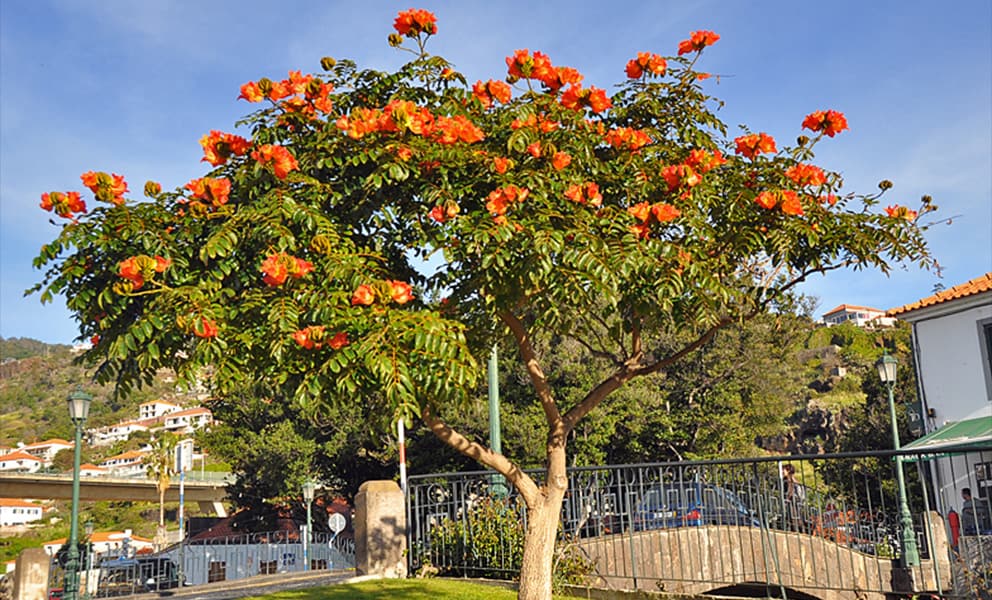With its brilliant reddish-orange blossoms evoking its namesake flower, the African tulip tree is one of the most striking and widely recognized ornamentals in Costa Rica’s warmer regions. Known locally as llama del bosque or “flame of the forest”, this towering tree is identifiable by its gray, fissured bark and large, compound leaves.
Though native to Africa, the African tulip tree was introduced to Costa Rica in the late 19th century by naturalist Charles Lankester, who established the renowned Lankester Botanical Garden.
Thanks to its adaptability and vibrant flowering, this member of the Bignoniaceae family has become a beloved specimen tree across parks, gardens, and rural landscapes in Costa Rica. When properly situated and cared for, the African tulip tree makes for an unforgettable focal point.
Common name: African tulip tree
Spanish name: Llama del bosque
Latin name: Spathodea campanulata
Family: Bignoniaceae
Botanical Description:
A member of the family Bignoniaceae, the African tulip tree reaches 15 meters in height with compound, evergreen leaves and striking, reddish-orange, tulip-like flowers, which form flat seed capsules about 20 centimeters long. The tree trunk has a light gray bark with medium fissures. In Costa Rica, it’s called llama del bosque or “flame of the forest.” Note that several other tropical trees have the same name.
Natural History:
A native of central Africa, the African tulip tree was brought to Costa Rica by naturalist Charles Lankester, who created the Lankester Botanical Garden near Cartago, east of San José – a must-see for gardening enthusiasts. The tree has adapted well to the warmer regions of the country, and can be found dotting the countryside with striking fiery-orange blossoms.
Ornamental Uses:
This tree is often used as a decorative shade tree for parks and avenues, as well as an impressive specimen for large yards or properties. It has been described as one of the most beautiful flowering trees in the world.
Natural Cultivation:
Although the African tulip tree is frequently found in leading nurseries, one can also propagate it from seed or from woody stem cuttings started in a sterile sand medium and kept well-watered until rooted. Transplant the young cuttings to black plastic nursery bags until they reach about 30 centimeters in height, and then transplant to permanent sites before they become root bound.
Choose sites with full sun for best growth and flowering. Moderate to fertile soil also helps promote good growth. Additions of aged compost once or twice a year tend to be sufficient. Water the young trees weekly during the dry season until they are well established, after which they require little or no special care; however, keep in mind that their soft, brittle wood makes them susceptible to wind damage.
Pests and Diseases:
These trees have few significant insect pests, but often suffer from root disease. Avoid planting them in wet soils and add several applications of Effective Microorganisms (EM) each year to help prevent this condition.

